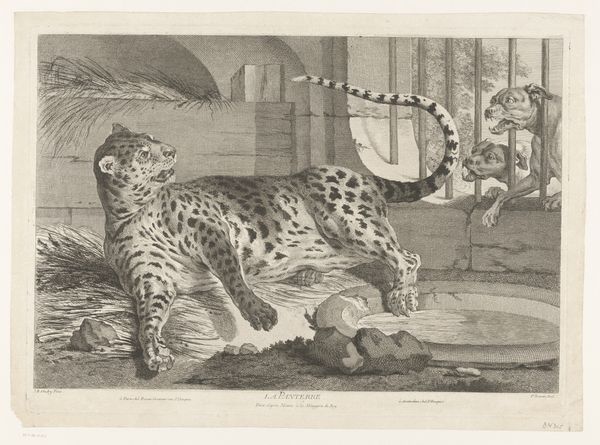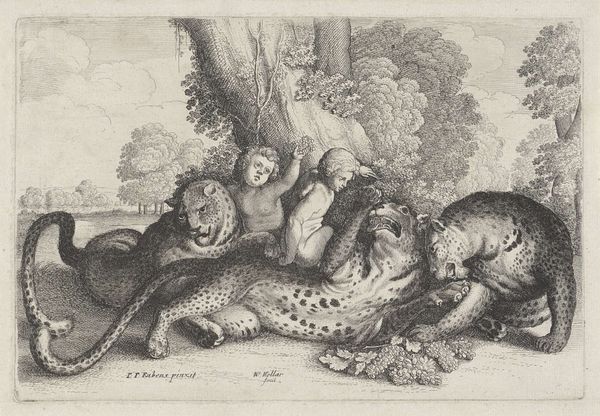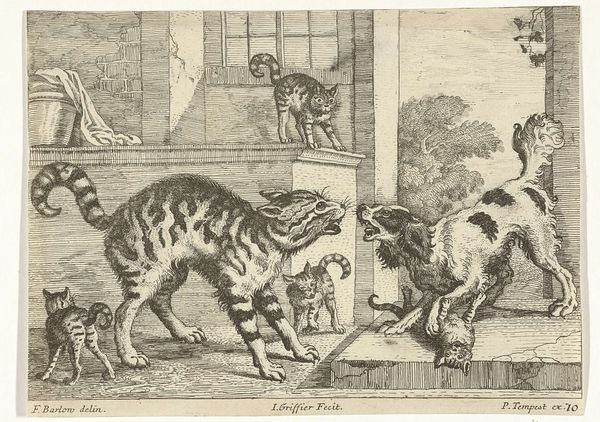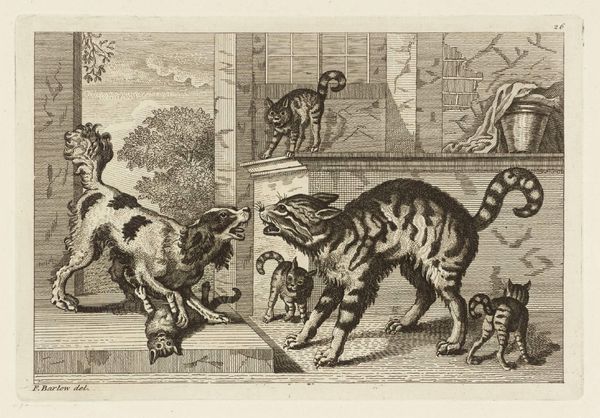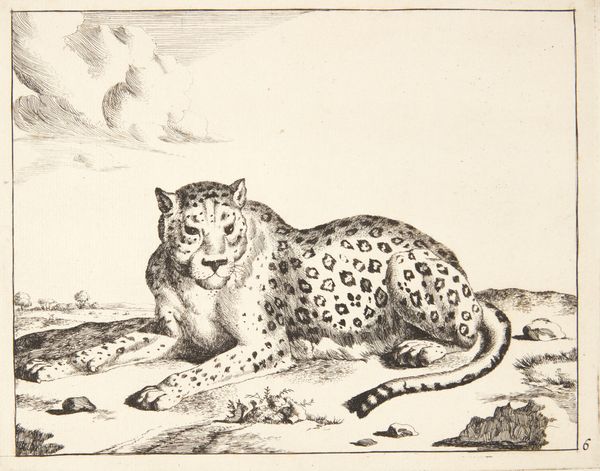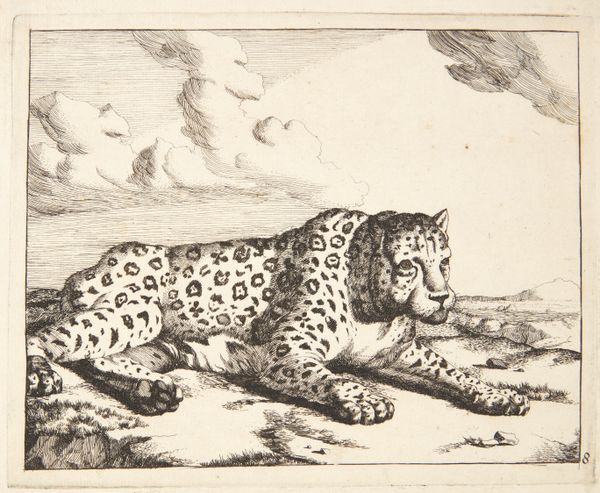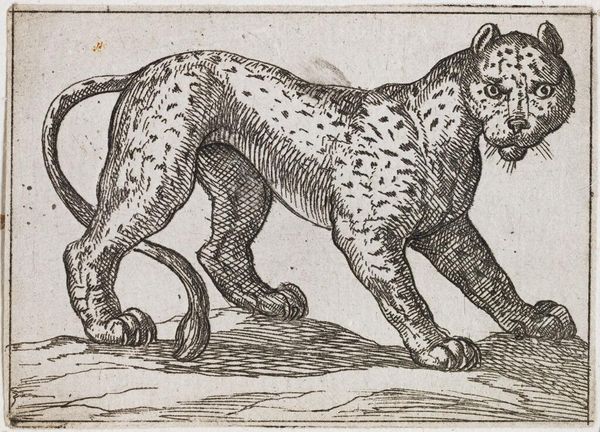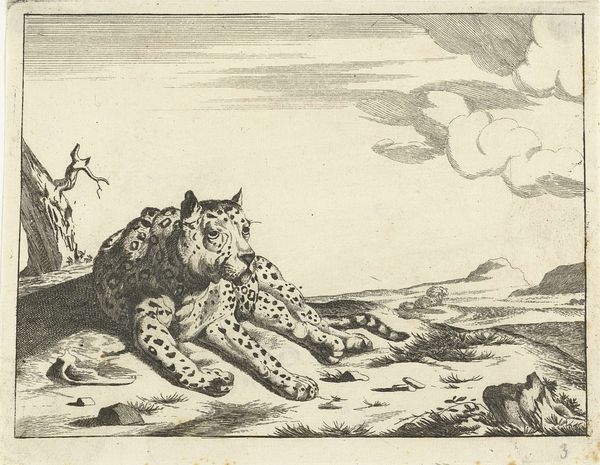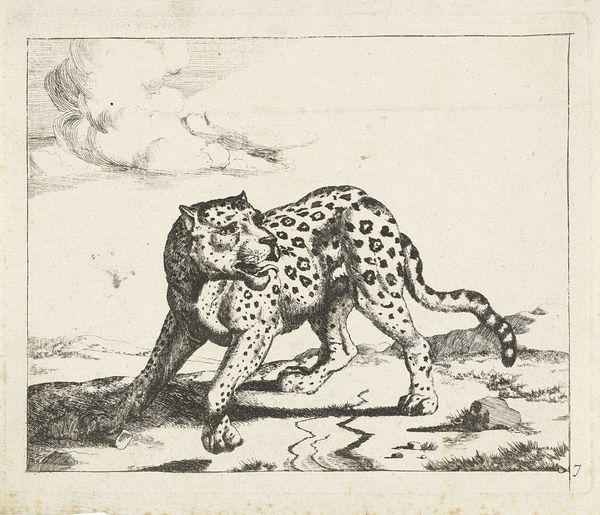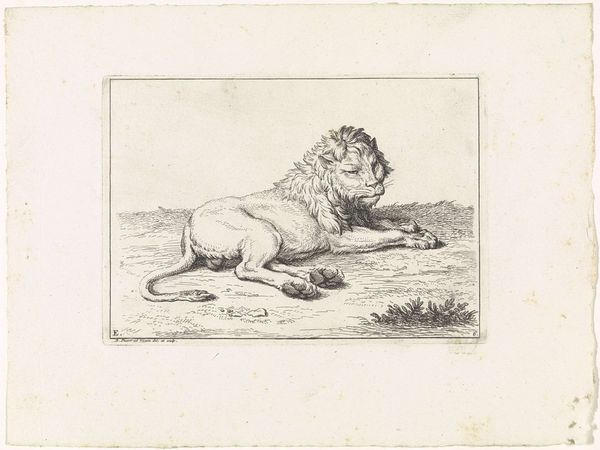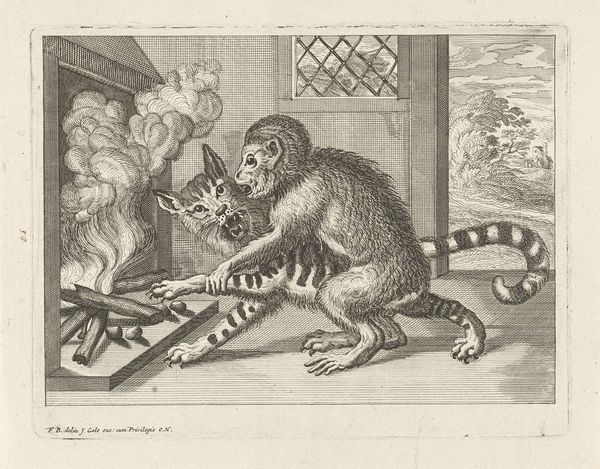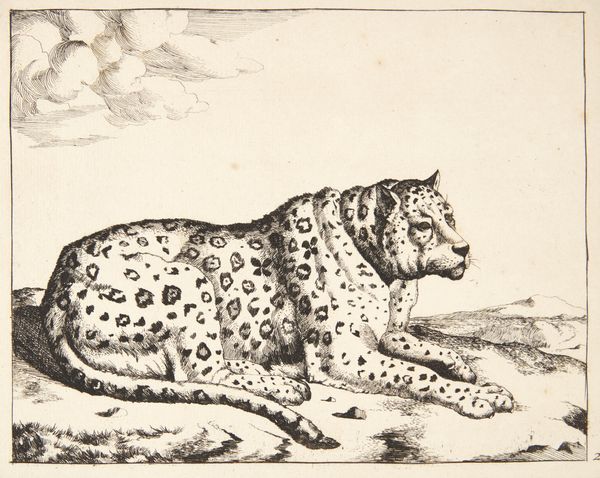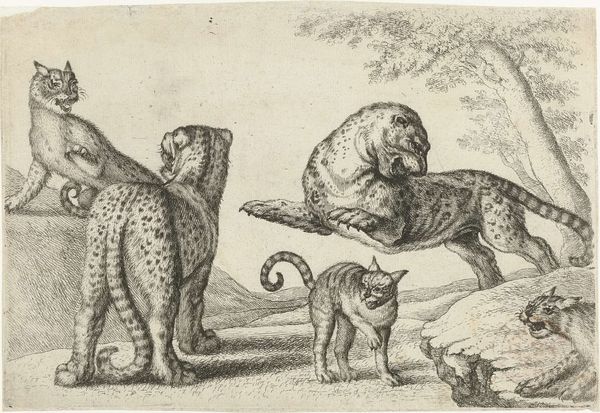
Copyright: CC0 1.0
Curator: Pierre François Basan's "Le panterre" depicts a panther in what seems to be a menagerie, observed with hostility by dogs in a cage. Its overall tone strikes me as somewhat melancholic. Editor: I am immediately drawn to the printmaking technique evident here. Look closely at the labor-intensive cross-hatching, which renders the texture of fur and stone. Curator: Indeed, and the panther itself feels like a symbol, representing perhaps the exotic "other" as viewed by 18th-century European society, with the dogs representing familiar and enforced societal norms. Editor: The contrast between the panther's natural state and its constrained environment, implied by the backdrop and the dogs' confinement, underscores the colonial project and its reliance on both subjugation and display. Curator: Absolutely. The gaze of the panther is poignant, seemingly aware of its captive status, perhaps even questioning the very systems that put it there. Editor: Examining the printmaking process itself allows us to appreciate the means by which such ideas about labor, nature, and control circulated in Basan's time. Curator: Thinking about the artist's intentions in a historical context allows us to understand the roots of current discussions on race, power, and identity. Editor: Precisely. By exploring material and social contexts, we begin to understand how art acts as a site for negotiating and shaping our world.
Comments
No comments
Be the first to comment and join the conversation on the ultimate creative platform.
